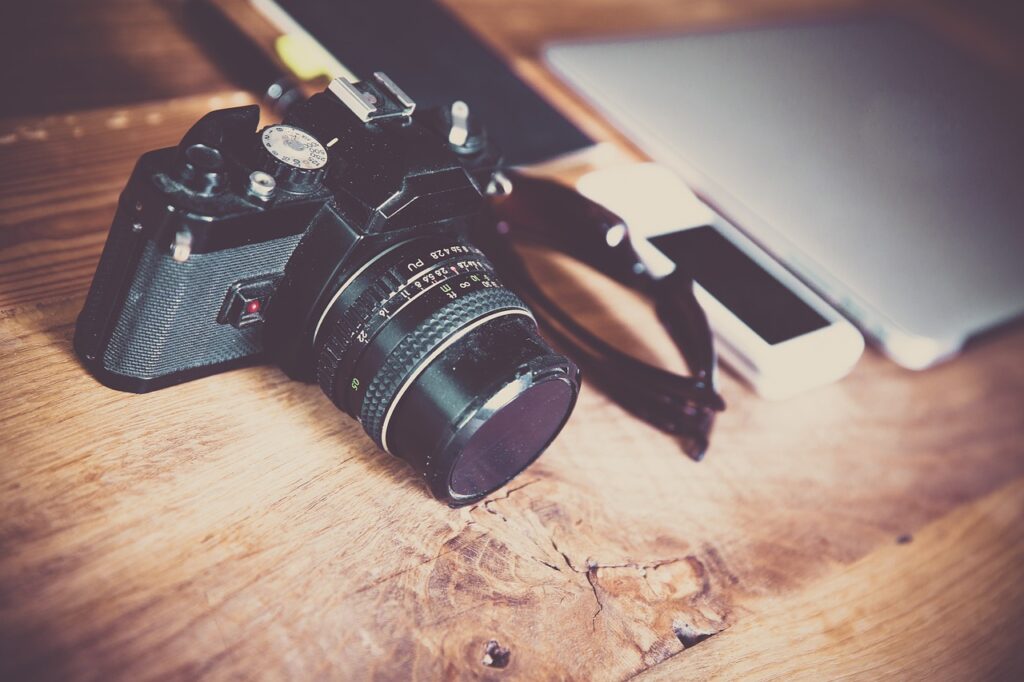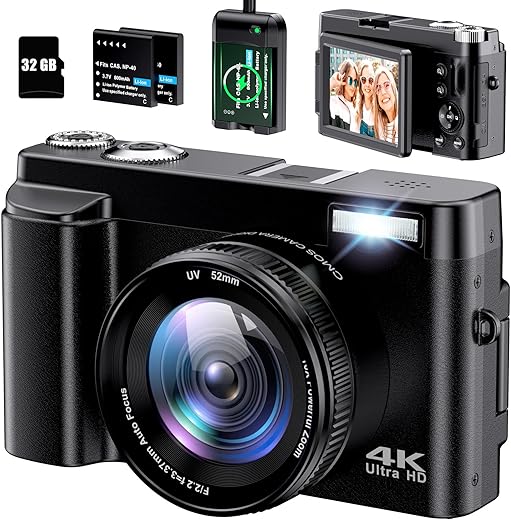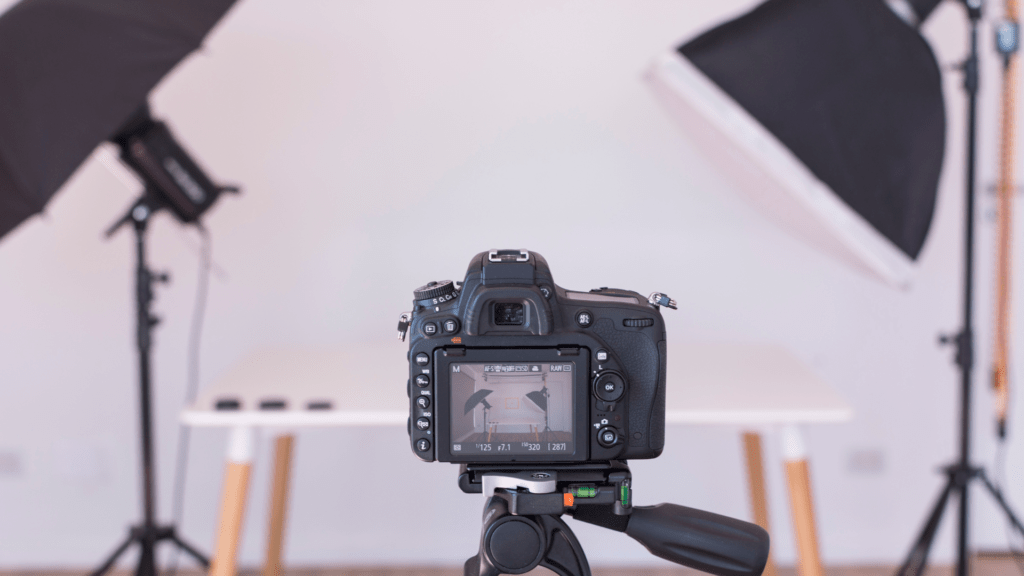As a fellow photography enthusiast, I understand how overwhelming it can be to choose your first camera. With so many options available, it’s easy to feel lost, especially when trying to decide between DSLR and mirrorless cameras. In this blog post, I’ll break down the key differences between these two popular types, highlighting their features, advantages, and potential drawbacks. My goal is to empower you with the knowledge needed to make an informed decision that aligns with your photography aspirations. Let’s embark on this journey together and find the perfect camera to kickstart your adventure in photography!
Best Cameras for Beginners: A 2021 Guide
Understanding DSLR Cameras
Digital Single-Lens Reflex (DSLR) cameras have long been a favored choice among photography enthusiasts and professionals alike. Their robust build, exceptional image quality, and versatility make them a compelling option for capturing everything from casual snapshots to more intricate projects. In this section, we’ll delve into how DSLR cameras operate, highlight their key features, and explore what makes them so popular in the photography space.
How DSLRs Work
A DSLR camera operates on a unique mechanism that combines the benefits of digital technology with traditional photographic techniques. Here’s a simplified breakdown of how a DSLR functions:
- Light Entry: When you press the shutter button, light passes through the lens and reaches a mirror inside the camera.
- Reflex Action: This mirror reflects the light up into an optical viewfinder (OVF), providing a direct optical preview of the scene you’re capturing.
- Exposure Capture: Once you take the picture, the mirror flips up, allowing light to hit the image sensor, which captures the image digitally.
- Instant Review: After capturing the image, you can immediately review it on the rear LCD screen.
Example: Canon EOS 90D
The Canon EOS 90D exemplifies these mechanisms in a user-friendly package. Its 32.5 megapixel sensor delivers exceptional image quality, and its dynamic autofocus system ensures sharp photos, even in challenging lighting conditions.
Key Features of DSLR Cameras
DSLR cameras are packed with features that cater to a variety of photography styles. Here are several standout features:
Optical Viewfinder
- Importance: The optical viewfinder offers a clear and real-time view without any lag, unlike electronic viewfinders (EVFs).
- Example: Nikon D750 boasts a 100% viewfinder coverage, ensuring that what you see is exactly what you get.
Battery Life
- Longevity: DSLRs generally provide extended battery life, allowing photographers to shoot hundreds, if not thousands, of images on a single charge.
- Example: The Canon EOS Rebel T7 can capture around 500 shots per charge, making it ideal for travel and genres like wildlife photography.
Lens Variety
- Flexibility: One of the greatest advantages of DSLRs is the extensive range of interchangeable lenses available. Whether you need a wide-angle for landscapes or a telephoto for distant subjects, there’s a lens for it.
- Examples:
- Wide-Angle: Canon EF-S 10-18mm f/4.5-5.6 IS STM
- Telephoto: Nikon AF-S NIKKOR 70-200mm f/2.8E FL ED VR
- Macro: Tamron SP 90mm f/2.8 Di VC USD
Considerations: Size and Weight
While DSLRs are praised for their performance, they are often bulkier compared to mirrorless cameras. Potential buyers should consider the implications of size and weight, particularly during travel or when taking long shoots.
- Pros:
- Sturdier and more durable build
- Better grip for handheld shooting in various conditions
- Cons:
- Heavier and bulkier than mirrorless counterparts
- May require additional effort in portability
Comparison Table: Popular DSLR Models
| Feature | Canon EOS 90D | Nikon D750 | Canon EOS Rebel T7 |
|---|---|---|---|
| Megapixels | 32.5 | 24.3 | 24.1 |
| Optical Viewfinder Coverage | 100% | 100% | 95% |
| Continuous Shooting Speed | 10 fps | 6.5 fps | 3 fps |
| Battery Life | 1300 shots | 1230 shots | 500 shots |
| Weight | 701 grams | 840 grams | 475 grams |
Exploring Mirrorless Cameras
As photography continues to evolve, mirrorless cameras have emerged as a popular choice for both amateur and professional photographers alike. These innovative devices boast features that cater to the modern photographer’s needs, combining advanced technology with a compact design. In this section, we will explore the unique characteristics of mirrorless cameras, their advantages, and how they compare to traditional DSLRs.
Unique Characteristics of Mirrorless Cameras
1. Electronic Viewfinders (EVF)
One of the standout features of mirrorless cameras is the electronic viewfinder. Unlike optical viewfinders found in DSLRs that rely on mirrors to reflect light into the viewfinder, mirrorless cameras use a digital display to show a preview of the image. This offers several advantages:
- Real-Time Exposure Preview: Mirrorless cameras adjust the live view in real-time, allowing photographers to see how changes in exposure, white balance, and depth of field will affect the final image.
- Focus Peaking: With focus peaking features, it becomes easier to achieve sharp focus, enhancing manual focusing capabilities, which is especially useful in macro photography.
Popular Models:
- Sony Alpha a6400: Renowned for its brilliant EVF and rapid autofocus capabilities.
- Fujifilm X-T4: Offers a high-resolution EVF with superb clarity, ideal for capturing vivid images.
2. Compact Design
The absence of a mirror mechanism allows for a significantly smaller and lighter camera body when compared to DSLRs:
- Portability: Ideal for travelling photographers who need to minimize gear weight without sacrificing image quality.
- Ergonomics: Many mirrorless cameras are designed with user-friendly controls, making them comfortable to hold for extended shooting sessions.
Comparison Table: Size and Weight
| Camera Model | Type | Dimensions (mm) | Weight (g) |
|---|---|---|---|
| Canon EOS R5 | Mirrorless | 138 x 97 x 88 | 738 |
| Nikon Z6 II | Mirrorless | 134 x 100.5 x 68.5 | 705 |
| Canon EOS 90D | DSLR | 140 x 104 x 76 | 701 |
| Nikon D7500 | DSLR | 136 x 104 x 76 | 640 |
Benefits of Lighter Weight and Smaller Size
Playful Creativity
The lightweight nature of mirrorless cameras encourages creativity. Photographers can easily experiment with angles and perspectives without the fatigue that often accompanies heavier DSLRs.
Enhanced Mobility
Whether you are hiking, exploring a city, or attending an event, the ease of carrying a compact mirrorless camera allows for spontaneity and comfort. For instance, the Olympus OM-D E-M10 Mark III has a sleek design that can easily fit into a small bag, enabling you to capture moments without hassle.
Rapid Technological Advancements
1. Autofocus Performance
In recent years, mirrorless cameras have seen remarkable improvements in autofocus technology, often outpacing traditional DSLRs. The use of on-sensor phase detection pixels enables quick and precise focusing.
- Eye-AF Technology: Many recent models, such as the Sony A7 III, feature impressive Eye-AF that locks onto the subject’s eye, facilitating portrait photography.
- Fast Continuous Shooting: Models like the Nikon Z9 can shoot up to 20 frames per second, making them excellent for capturing fast-moving subjects.
2. Video Capabilities
Mirrorless cameras are quickly becoming the preferred choice for videographers due to their high video quality and frame rate options.
- 4K and Beyond: Cameras like the Panasonic Lumix GH5 support 4K recording with multiple frame rate options, ideal for professional filmmaking.
- In-Body Stabilization: Many models offer in-body image stabilization (IBIS) which is invaluable for steady shots in video production, such as the Fujifilm X-H2S.
Comparative Analysis: DSLR vs. Mirrorless
When considering an investment in photography equipment, one of the primary decisions is choosing between a Digital Single-Lens Reflex (DSLR) camera and a mirrorless camera. Both types have their unique advantages and drawbacks, and understanding these will help you make an informed choice.
Image Quality
DSLR
- Sensor Size: DSLRs typically have larger sensors, such as APS-C or full-frame sensors, which often result in greater depth of field control and better performance in low-light conditions. For instance, the Canon EOS 5D Mark IV boasts a full-frame sensor and excels in capturing high-quality images with minimal noise.
- Color Accuracy: DSLRs often deliver excellent color reproduction. The Nikon D850, for example, is renowned for its outstanding color accuracy and dynamic range.
Mirrorless
- Advancements in Technology: Modern mirrorless cameras have caught up significantly in image quality, with many sporting advanced sensors. The Sony Alpha a7 III, known for its exceptional low-light performance, is a prime example, featuring a full-frame sensor that rivals many DSLRs.
- Video Capabilities: If you plan to shoot video, mirrorless cameras often have an edge. The Panasonic Lumix GH5, designed with filmmakers in mind, showcases high-quality video recording and advanced video functionality.
Lens Compatibility
DSLR
- Extensive Ecosystem: DSLRs benefit from a large range of compatible lenses, given their long-standing history in the market. For instance, Canon and Nikon offer a vast selection of lenses that cater to various photography styles, from macro to telephoto.
- Adaptation: While DSLRs are generally less flexible in adaptation for lenses, many brands offer an extensive line of native lenses.
Mirrorless
- Growing Lens Availability: The lens lineup for mirrorless systems is expanding rapidly. Brands like Sony and Fujifilm have created excellent native options, such as the Sony FE 24-70mm f/2.8 GM, which is widely praised for its versatility.
- Adaptors: You can often use DSLR lenses on mirrorless bodies with adapters, though there may be limitations in autofocus performance or aperture control.
Shooting Speed
DSLR
- Continuous Shooting: DSLRs often excel in continuous shooting speed, allowing photographers to capture fast action sequences. The Nikon D500 boasts a continuous shooting speed of up to 10 frames per second.
Mirrorless
- Electronic Shutter: Many mirrorless cameras, such as the Fujifilm X-T4, offer extremely fast electronic shutters, enabling silent shooting. This is advantageous in environments requiring discretion, such as wildlife photography or concerts.
- Focus Speed: Mirrorless systems often employ on-sensor phase detection and contrast detection, resulting in fast and accurate autofocus. Advanced models, like the Sony Alpha a9 II, can even track moving subjects with remarkable precision.
Ease of Use for Beginners
DSLR
- Intuitive Controls: Many DSLRs come with more physical buttons and dials, which some beginners may find easier to navigate. The Canon EOS Rebel T8i provides a user-friendly interface, making it accessible for newcomers.
- Optical Viewfinder: With an optical viewfinder, beginners may find DSLRs more straightforward in terms of composing shots in real-time without delays.
Mirrorless
- Digital Display: When using a mirrorless camera, the electronic viewfinder (EVF) offers a preview of the final image, including exposure and depth of field effects. This can help beginners understand how their settings will impact their images. The Sony Alpha a6400 is perfect for this, featuring a bright and crisp EVF.
- Lightweight Design: Many mirrorless cameras are more compact than their DSLR counterparts, often making them easier to handle. This can be beneficial for beginners who may struggle with heavier equipment.
Price Range
DSLR
- Budget-Friendly Options: Entry-level DSLRs like the Nikon D3500 are widely available and often come at a competitive price point, making them appealing for beginners. Accessories and lenses also exist in various price ranges.
Mirrorless
- Expanding Market: Although historically mirrorless cameras had a higher entry cost, there are now budget options available, such as the Canon EOS M50 Mark II, making them accessible to a wider audience.
Durability
DSLR
- Robust Build: Many DSLRs, such as the Canon 7D Mark II, are designed with robust weather-sealing and can withstand challenging environments, making them suitable for outdoor photography.
Mirrorless
- Improving Durability: The durability of mirrorless cameras is improving with models like the Olympus OM-D E-M1 Mark III, which offers weather-sealing and ruggedness, appealing to outdoor enthusiasts.
Learning Curve for Newcomers
DSLR
- Familiarity: The traditional design and controls of DSLRs may resonate better with those who have previous photography experience. Moreover, the abundance of tutorials and resources associated with DSLRs eases the learning curve.
Mirrorless
- Tech-Savvy Approach: For those comfortable with technology, mirrorless cameras often boast features like touchscreen controls and customizable options, which can be appealing. However, they may require some acclimatization.
In making a choice between DSLRs and mirrorless cameras, consider your specific needs, photography style, and comfort level with technology to make sure you select the right tool for your creative endeavors. Each camera type offers unique benefits, making it crucial to assess what aligns best with your photographic aspirations.
Final Thoughts on Choosing Your First Camera
In conclusion, choosing the best camera type for beginners is a personal journey that hinges on individual needs and preferences. Throughout this post, I emphasized the importance of considering both DSLR and mirrorless cameras, weighing their respective pros and cons. As you reflect on your photography goals and what features matter most to you, I encourage you to select a camera that aligns with your interests and aspirations. Ultimately, the right choice is the one that inspires you to explore and enjoy your photography journey.












Do you think smartphone cameras are enough for beginners? Some of them are pretty great!
Any recommendations for good starter lenses? I want to explore photography a bit more!
Great article! I was super confused about which camera to buy. This really helped!
Honestly, I think a mirrorless camera is the way to go for beginners. So lightweight and easy to use!
I’m totally overwhelmed by all the options out there. Wish I could just borrow a friend’s camera first!
I started with a DSLR, but I found it kind of bulky. Wish I’d read this before jumping in!